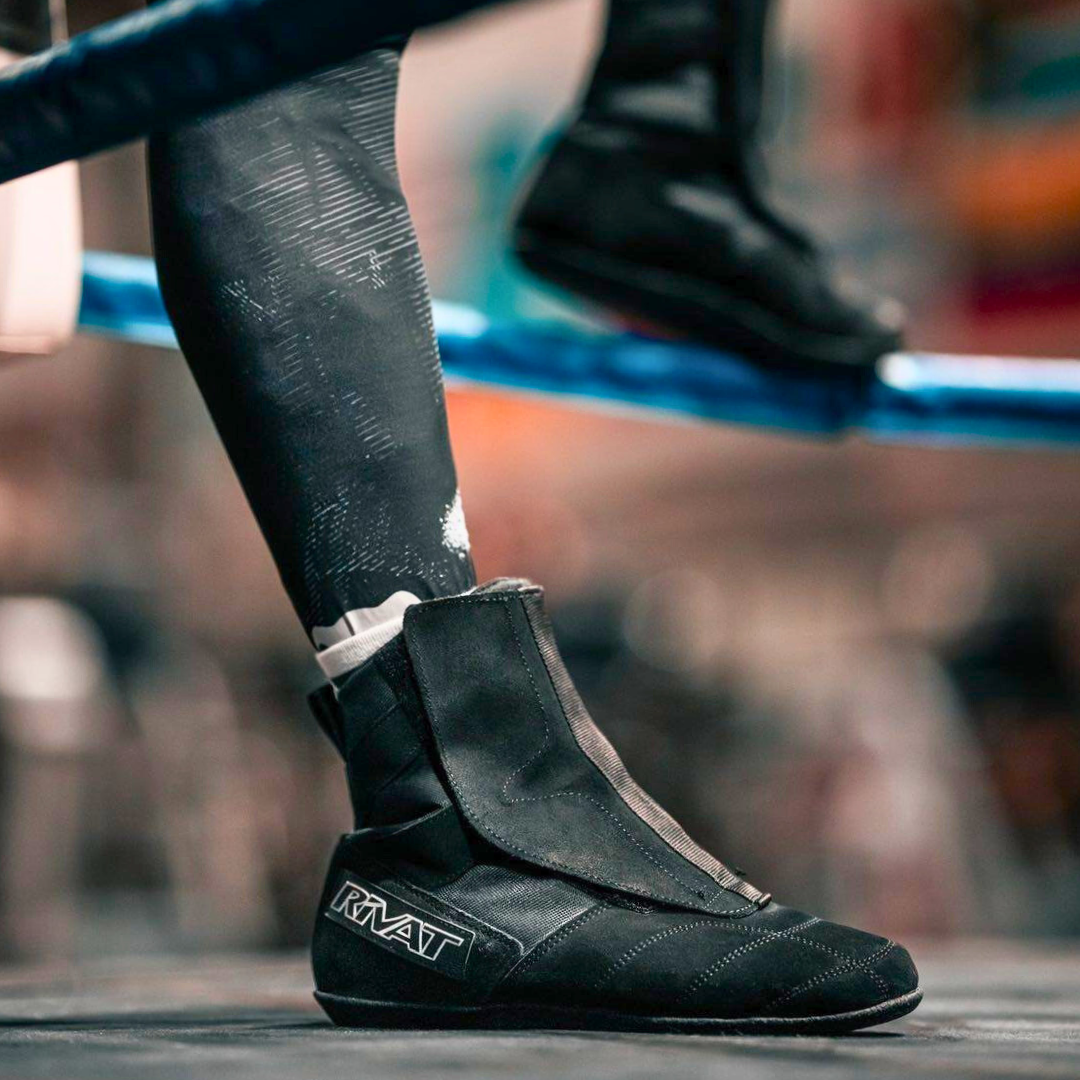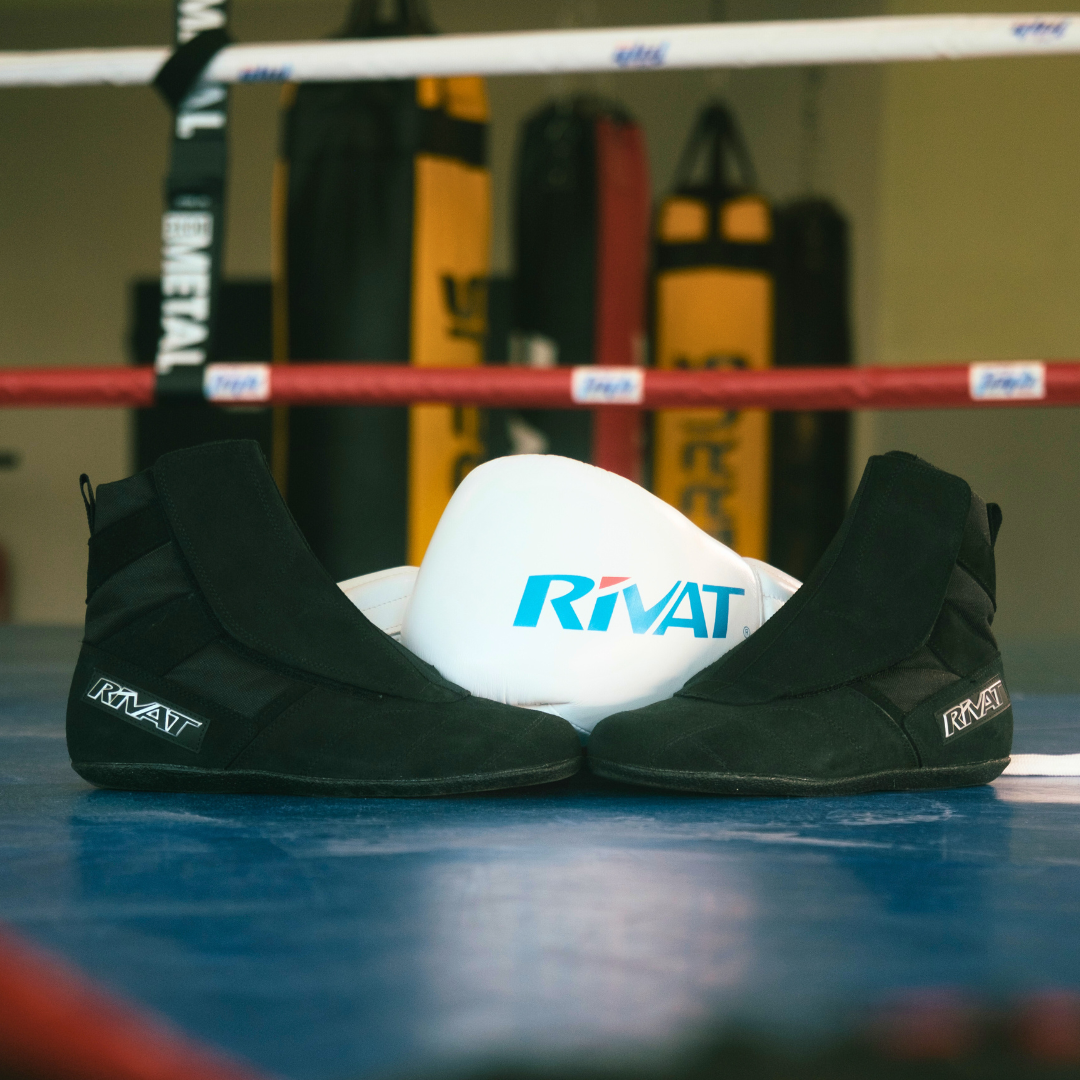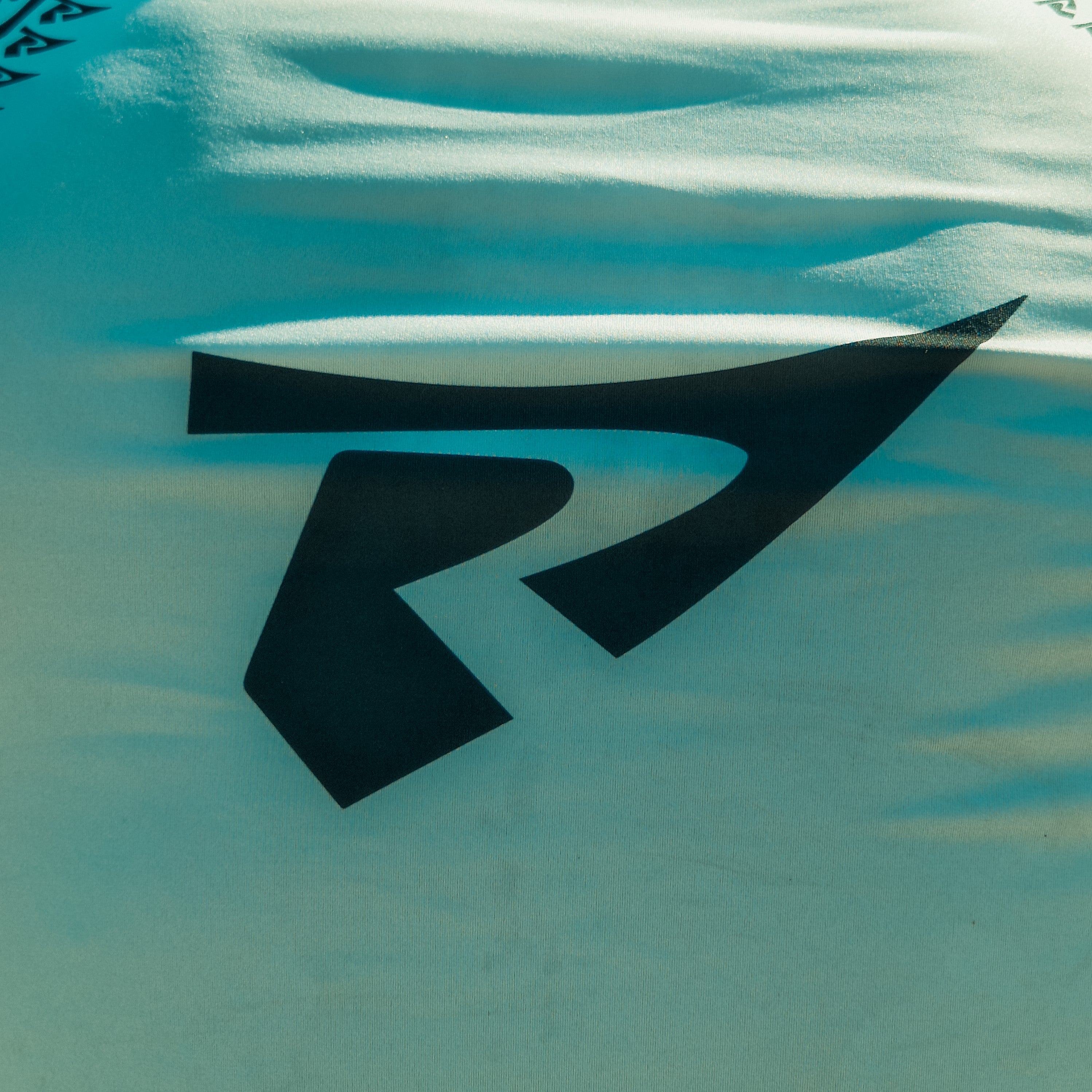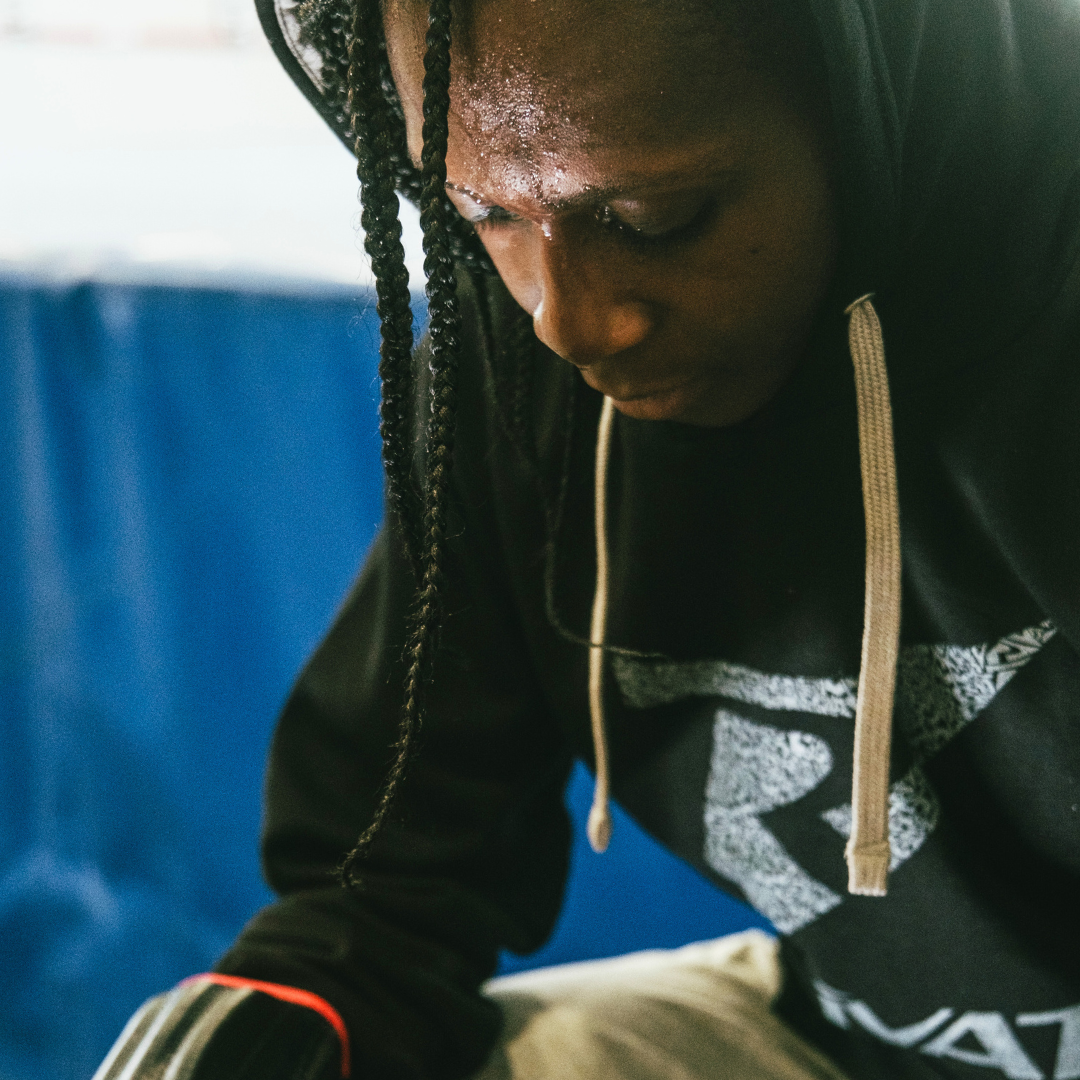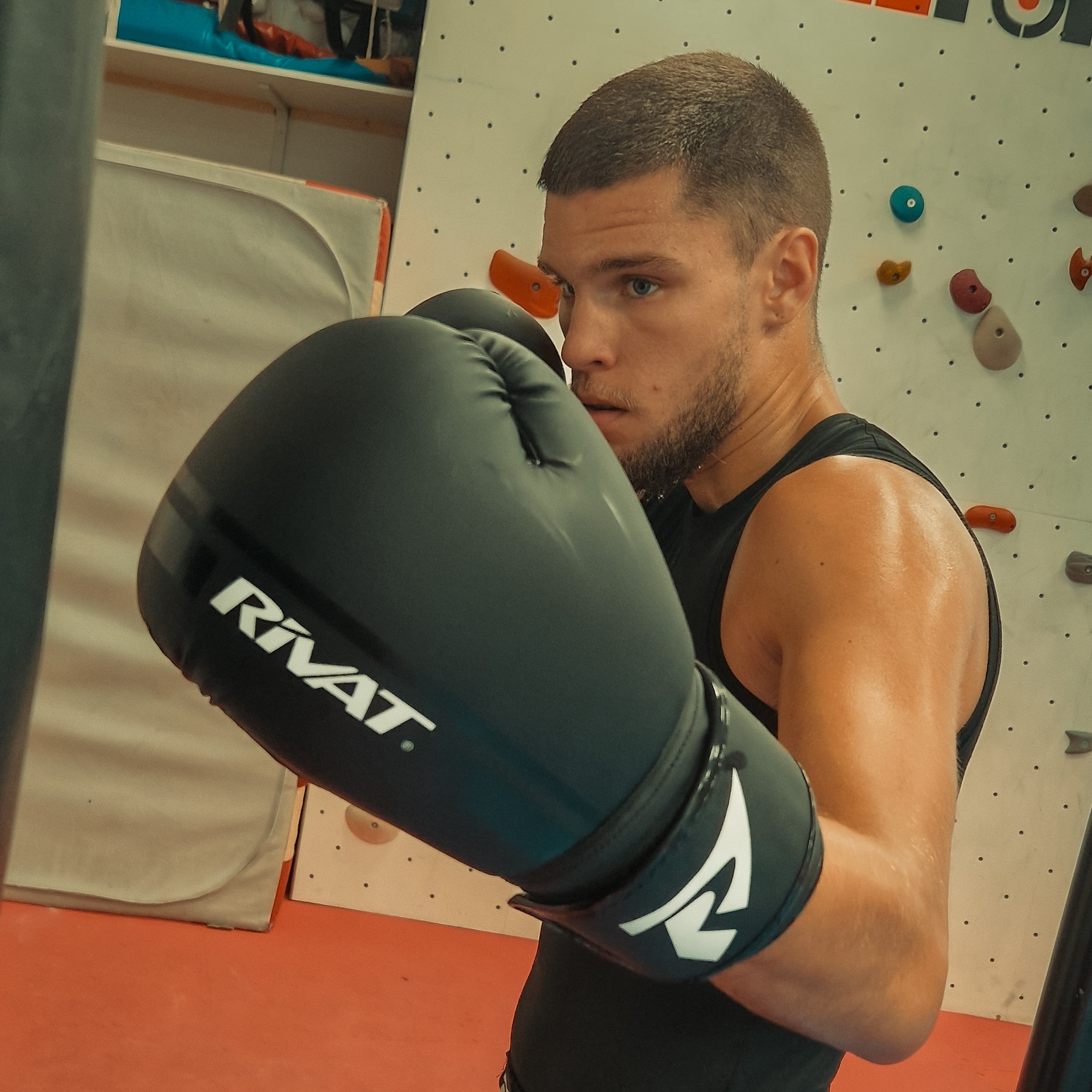1. Why is lacing important?
Properly lacing your shoes does more than just keep them on your feet. It helps to:
- Optimize comfort: Properly adjusted lacing reduces pressure points and prevents blisters or irritation.
- Improve stability: Proper foot support limits internal movement, which is essential to prevent injury.
- Maximize performance: Proper lacing allows for better transmission of energy from the foot to the ground, optimizing your movements in the ring.
2. Standard lacing: Versatility and simplicity
Standard lacing is the most commonly used method. It is simple to do and provides balanced foot support, suitable for most users.
Steps:
- Start by inserting the laces into the bottom eyelets, working them from the outside to the inside.
- Cross the laces and insert them into the opposite eyelets going up.
- Repeat this step until you reach the last eyelets at the top of the shoe.
- Tighten evenly and tie a standard knot.
Benefits :
- Suitable for all foot types.
- Provides good overall support without being too tight.
3. Cross lacing: For wide feet and increased comfort
Cross lacing , also called ladder lacing, is ideal for those with wide feet or looking for a looser fit.
Steps:
- Insert the laces into the bottom eyelets, passing them from the outside to the inside.
- Cross the laces, but this time, pass each lace under the previous one before inserting it into the opposite eyelet.
- Continue this pattern up to the last eyelet.
- Tighten and tie a knot.
Benefits :
- Reduces pressure on the top of the foot.
- Provides more space for wide feet.
- Maintains good lateral support.
4. Side lacing: For a precise fit
This lacing improves stability and is particularly beneficial for boxers looking for optimal support.
Steps:
- Start by inserting the laces into the bottom eyelets, working them from the outside to the inside.
- Cross the laces and insert them into the opposite eyelets, but passing the laces not straight, but slightly diagonally towards the back.
- Continue to cross the laces while maintaining this slight diagonal, which will further tighten the mid-foot area.
- For the last eyelets, make a tighter cross around the ankle before tying the knot.
Benefits :
- Provides an ultra-precise fit around the ankle.
- Improves lateral stability.
- Prevents internal movements of the foot.
5. Lacing for high arches: Reduce pressure on the top of the foot
If you have high arches, standard lacing can sometimes cause uncomfortable pressure on the top of your foot. High arch lacing is designed to relieve this pressure while maintaining good support.
Steps:
- Insert the laces into the bottom eyelets, but leave the first crossing very loose.
- Do not cross the laces for the first two eyelets, but insert them directly into the opposite eyelets, going up.
- From the third eyelet, continue the crisscross lacing to the top of the shoe.
- Tighten slightly and tie a knot.
Benefits :
- Reduces pressure on the top of the foot.
- Allows for a custom fit for high arch feet.
- Maintains good support without excessive compression.
6. Quick lacing: For intense workouts
Speed lacing is designed for boxers who need to put on and take off their shoes quickly without sacrificing stability or comfort. This type of lacing is especially useful for training sessions.
Steps:
- Insert the laces into the bottom eyelets in the standard manner.
- Cross the laces and thread them through the opposite eyelets, but skipping one eyelet each time.
- Continue until you reach the last eyelets.
- Tie a quick knot or use a bungee lock system for even faster lacing.
Benefits :
- Saves time when changing shoes.
- Provides good stability despite the quick lacing.
- Ideal for boxers in competition or intensive training.
7. Tips for adjusting the lacing correctly
- Always start at the toe: Make sure the area around the toes is snug but not too tight, before tightening the rest of the foot.
- Tighten evenly: Avoid pulling too hard on any one segment of the laces. Even tightening ensures better comfort.
- Check the lacing regularly: Laces can become loose during training. Make it a habit to check and readjust your lacing.
8. FAQ about lacing
Q: What type of lacing should I use if I have narrow feet?
A: Standard lacing is usually sufficient for narrow feet. You can also try tightening it tighter at the ankle for a better fit.
Q: Do I always have to use side lacing?
A: Side lacing is an innovative option for those looking for a very precise fit, especially around the ankle. It is particularly recommended for competitors.
Q: How do I know if my lacing is too tight or too loose?
A: If your toes are compressed or you feel pain on the top of your foot, your lacing is too tight. If your heel slips or you feel your foot moving inside the shoe, the lacing is too loose.
By adopting the right lacing techniques for your needs, you not only optimize the comfort of your RIVAT shoes but also your performance in the ring. Don't hesitate to experiment with different types of lacing to find the one that suits you best.

